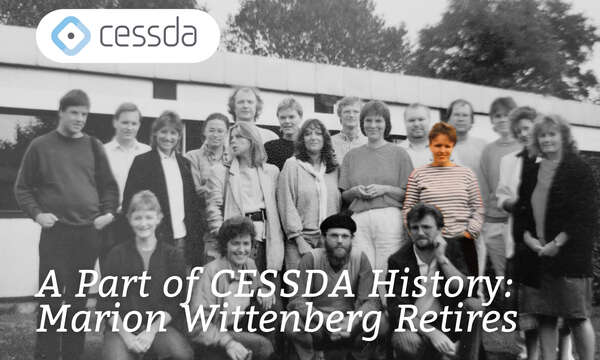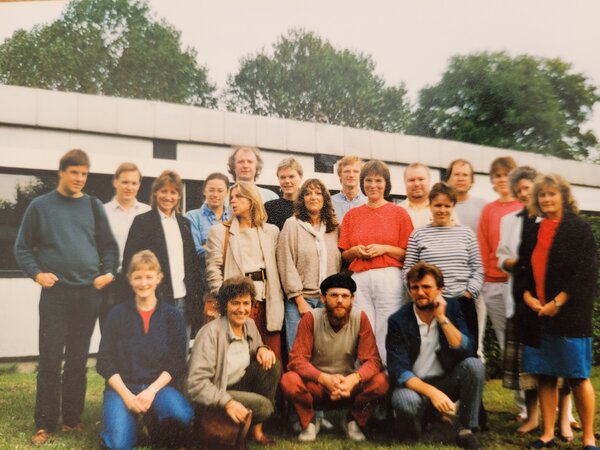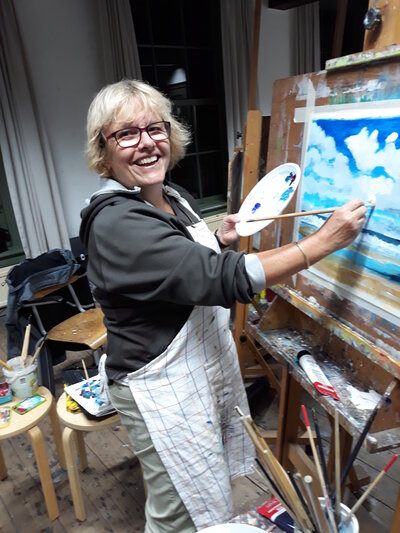
A Part of CESSDA History
It’s 1985, and Marion Wittenberg needs a job. As a young student during an unemployment crisis, she needs a way to make money to help her through some tough times. Today, four decades later, she signs out at DANS for the last time.
From magnetic tapes and paper documentation to a fully digital archive. From telephones and letters to Zoom calls and AI assistants. From the Steinmetz Archive to DANS. When Marion Wittenberg walks out the doors for the last time today, she can look back on 40 years’ worth of stories, experiences, and friends and colleagues in Social Science data archiving.
“Back in 1985 the Netherlands was going through an unemployment crisis. Young people in particular were struggling to find jobs. I was a student, but I still needed a job to keep me going. So, on my birthday, on the 4th of July, I went to an interview at the Steinmetz Archive.”
The Steinmetz Archive, which became DANS in 2005, was a small institution back then, with some seven or eight employees. It is one of the original founding bodies of CESSDA, along with SND (later Sikt), GESIS, DDA (Danish Data Archive), and UKDS. Marion’s job was in acquisition, meaning she was tasked with screening reports in search of promising datasets, and then contacting researchers to ask them to share their data.
For Marion, it was only meant to be a temporary job; something to sustain her until she finished her studies. But life had other plans for Marion.
Six years later, Marion had finished her studies, but she chose to remain with Steinmetz. There she quickly became an important part of the archive, and of the larger European CESSDA network.
“I was part of the first CESSDA Expert Seminar in Odense. I had to chair the first-ever session, even though I barely spoke English! It was a real challenge, but we managed. The topic was acquisition and how you approach researchers, which I worked with daily. It was very special for me to go abroad and meet other colleagues.”
Back then, it was not common practice for CESSDA’s Service Providers to meet, so the directors decided it would be good for their employees to have a chance to exchange ideas and experiences, which paved the way for the Expert Seminars.

A photo from the very first Expert Seminar. Marion stands in the middle row, wearing a striped sweater. Behind her stands her Steinmetz Archive colleague Nero Matthias. On his right, half obsucerd, stands Iris Alfredsson (SND), who also retired earlier this year. To the left of Nero stands Birger Jerlehag (SND), and two spaces left of him we find Vigdis Kvalheim, current vice chair of the CESSDA General Assembly.
The strange duck
When Steinmetz became DANS in 2005, they became one of the first CESSDA Service Providers to develop their own online archiving system, allowing depositors to directly upload their own data and for researchers to download it. While this is something we take for granted today, it was a major change to the way things had been done back in the day.
“At the time, most CESSDA archives were sceptical about implementing such a solution, so we were “the strange duck in the pond”, as we say in the Netherlands. But it did make our lives easier. We no longer had to receive CDs and diskettes in the mail to get new data,” says Marion, before she laughs and adds, “I was talking to a younger colleague the other day, and he had never even heard of diskettes. So, a lot has changed.”
As time went by, Marion’s influence and importance at DANS only grew. Soon her work moved away from acquisition, and she took on new tasks, both within DANS and CESSDA.
“I was first only involved in data acquisition, but later I became involved in training. I did guest lectures at universities and spoke to students about data and the importance of archiving and publishing data, I organised a bunch of seminars together with researchers about the usage of data, and I became more involved in CESSDA projects, like CESSDA SaW (Strengthening and Widening) and SHOCC. But something I’m proud of is my work with DataverseNL.”
DataverseNL is a shared service provided by participating institutes and DANS. It is a data repository where researchers can store, share, and register their research data with ease.
“I developed the community from seven institutions back ten years ago to twenty-three today. And it really has become a community, with regular meetings to talk about issues, functionality, how to reach researchers, and what to do with the data. I’m very proud of this, and I have truly enjoyed working on it.”
Always more work to be done
 Marion might be retired, but she has no plans to sit still.
Marion might be retired, but she has no plans to sit still.
“Oh, I have plenty of things I plan to do. I like going to museums, I like painting, and biking, walking, and hiking, although you can barely call it hiking in the Netherlands. Now I’m going to have a little holiday, but once I’m back I’m going to start doing voluntary work. I still have a lot to give, and I like to be in contact with people. And, of course, I’ll have more time to take care of my house and garden.”
As she puts the final things in order, she gives some final advice to the future generations of data archivists:
“Don’t be afraid. Ask questions if you don’t understand something. Sometimes people are afraid because they don’t understand something. It’s always better to ask. That’s why, whenever I hired someone new, I always asked them how they deal with situations when there’s something they don’t know. Which brings me to my second piece of advice: work together. You can learn so much from each other, both within and across borders.”
Thank you for all the years together, and all the work you’ve done for CESSDA and DANS, Marion. Enjoy your well-deserved retirement!